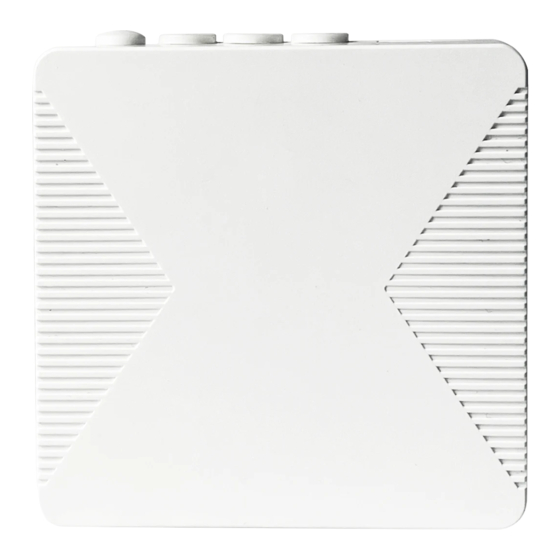
Table of Contents
Advertisement
Quick Links
Advertisement
Table of Contents

Summary of Contents for ZIGBEE OPS305
- Page 1 OPS305 Occupancy Sensor Quick Start Guide...
-
Page 2: Safety Handling
Safety Handling WARNING: Failure to follow these safety notices could result in fire, electric shock, other injuries, or damage to the Occupancy Sensor and other property. Read all the safety notices below before using the Occupancy Sensor. • Avoid high humidity or extreme temperatures. • Avoid long exposure to direct sunlight or strong ultraviolet light. -
Page 3: Technical Specifications
Technical Specifications Wireless Connectivity ZigBee • 2.4GHz IEEE 802.15.4 ZigBee Profile • ZigBee 3.0 • Operating frequency: 2.4GHz RF Characteristics • Range outdoor/indoor: 100m / 30m (Open area) Physical Specifications Operating Voltage • Micro-USB Detector • 10.525GHz Doppler Radar • Maximum radius: 3m Detection Range • Angle: 100° (±10° ) Hanging height • Maximum 3m... - Page 4 Welcome OPS305 Occupancy Sensor can detect presence, even if you are asleep or in a stationary posture. Presence detected via radar technology, which is more sensitive and accurate than PIR detection. It can be tremendously beneficial in nursing homes to monitor and link with other devices to make your home smarter.
-
Page 5: Get To Know Your Device
Get to know your device LED indicator Micro-USB Reset Button Reset Button Reset: Press and hold the reset button for 10 seconds until the LED light flashes three times at third second, and it will flash three times in the tenth second. -
Page 6: Configure Network
LED Status What it means Device has joined a ZigBee network. No light Continuous and slow Device has not joined a ZigBee network. flashing Flashing once Presence detected When you press the reset button once Flashing once Device has joined a ZigBee network. - Page 7 Installaion Important safety information! • Do not touch the terminals of the device while testing. • Turn off all the power supply for this equipment before installing. • Make sure that the power supply is off before connecting or disconnecting it to an auxiliary device. • Always use a properly rated voltage sensing device to confirm power is off.
- Page 8 2. You need to pay attention to the distance and range of the occupancy sensor when installing. Within the sensing range, avoid facing another occupancy sensor or radar equipment. Ceiling ���°(±��°) �m �m �m...
- Page 9 3. Use the mounting bracket as template to mark the two holes on the ceiling for installing screws. 4. Screw the mounting bracket onto the ceiling according to marked location. Install wall plugs if necessary. 5. Locate the hooks of the mounting bracket and line up the hooks with the mounting holes on occupancy sensor.

Need help?
Do you have a question about the OPS305 and is the answer not in the manual?
Questions and answers